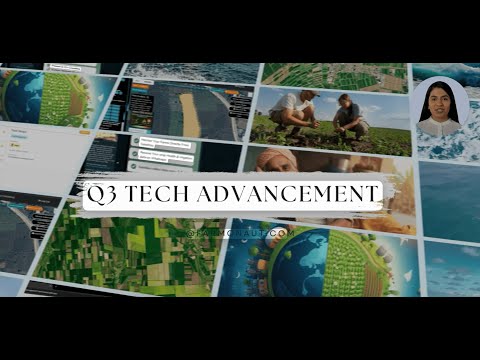Iowa’s AI-Driven Government Efficiency Task Force: Revolutionizing State Services and Workforce Development
“Iowa’s new AI-driven task force aims to review and optimize state services within just 6 months.”
In a groundbreaking move that signals a new era for government efficiency in the Hawkeye State, Iowa Governor Kim Reynolds has announced the formation of a revolutionary task force aimed at modernizing state services and maximizing taxpayer return on investment. This ambitious initiative, known as Iowa DOGE (Department of Government Efficiency), draws inspiration from federal models and brings together a diverse group of business leaders and government representatives to tackle key challenges in Iowa’s workforce development, rural programs, and child care services.
As we delve into the details of this transformative effort, we’ll explore how the integration of artificial intelligence in state operations promises to streamline processes and reduce redundancies across local, state, and federal levels. From Des Moines to the rural communities of Sheffield, this task force is set to reshape Iowa’s governmental landscape, with a particular focus on job training and technology adoption.

The Genesis of Iowa DOGE
Governor Reynolds’ announcement of the Iowa DOGE task force marks a significant shift towards a more business-like approach in state governance. During a press conference at the Iowa Capitol, Reynolds emphasized the critical importance of maximizing taxpayer investment in government services and advancing job training to bolster the state’s workforce.
The task force, modeled after the U.S. Department of Government Efficiency established during the Trump administration, will be led by Emily Schmitt, the chief administrative officer and general counsel of Sukup Manufacturing. This choice underscores the commitment to bringing private sector expertise into the realm of government operations.
Primary Goals and Objectives
Governor Reynolds has outlined three primary goals for the Iowa DOGE task force:
- Enhancing Return on Investment for Iowa Taxpayers: By scrutinizing current processes and identifying areas for improvement, the task force aims to ensure that every tax dollar is utilized efficiently.
- Fostering Job Training: With a focus on workforce development, the initiative seeks to align state programs with the evolving needs of Iowa’s industries, from manufacturing in Bettendorf to agricultural initiatives in rural areas.
- Leveraging Modern Technologies: The integration of artificial intelligence and other cutting-edge technologies is expected to revolutionize state operations, improving service delivery and decision-making processes.
Reynolds highlighted the need for government to adopt the adaptive and innovative practices of the private sector, stating, “Businesses constantly evolve to survive, and this mindset should also apply to governmental operations.”
The Role of Artificial Intelligence in Government Efficiency
One of the most exciting aspects of the Iowa DOGE initiative is the potential integration of artificial intelligence into state government operations. AI has the power to transform how services are delivered, decisions are made, and resources are allocated across Iowa’s 99 counties.
While the specific applications of AI will be determined by the task force’s recommendations, we can anticipate several potential areas where this technology could make a significant impact:
- Predictive Analytics for Resource Allocation: AI algorithms could analyze historical data and current trends to optimize the distribution of state resources, ensuring they are directed where they are needed most.
- Automated Customer Service: AI-powered chatbots and virtual assistants could handle routine inquiries, freeing up human staff to focus on more complex issues and improving response times for citizens.
- Fraud Detection and Prevention: Machine learning models could be employed to identify patterns and anomalies in financial transactions, helping to safeguard taxpayer dollars.
- Smart Infrastructure Management: AI could be used to monitor and predict maintenance needs for Iowa’s roads, bridges, and other critical infrastructure, potentially saving millions in repair costs.
The integration of AI in government operations aligns with the growing trend of digital transformation in the public sector. As we consider the potential of these technologies, it’s worth noting that companies like Farmonaut are already leveraging AI and satellite technology to revolutionize sectors such as agriculture. While Farmonaut’s focus is on precision farming and crop management, the principles of data-driven decision-making and resource optimization are equally applicable to government efficiency.
Timeline and Implementation
The Iowa DOGE task force is set to hit the ground running, with plans to convene within the next two months. Governor Reynolds has set an ambitious timeline, expecting recommendations to be delivered to her office and the state legislature within six months. This rapid turnaround is designed to prepare for potential reforms leading into the 2026 legislative session.
It’s important to note that while the task force will engage in discussions with agency leaders about budgetary matters, it will not have direct implementation authority. Instead, the recommendations will be presented to the governor and lawmakers, who will then have the power to enact changes through legislative processes.

Potential Impact on State Employment
Governor Reynolds has acknowledged that the task force’s findings might lead to recommendations for job reductions within state government. This possibility echoes her previous proposal in 2023, which eliminated 600 vacant positions. During her prior reorganization of the state executive branch, Reynolds reduced the number of cabinet-level agencies and eliminated numerous state regulations, resulting in significant taxpayer savings.
While the prospect of job reductions may raise concerns, it’s essential to view this in the context of overall efficiency and the potential for reallocation of resources to areas of greater need. The task force’s focus on job training and workforce development suggests that any changes in state employment would be balanced with efforts to enhance skills and create new opportunities in growing sectors.
Collaboration Across Government Levels
A key aspect of the Iowa DOGE initiative is its focus on exploring collaborations between state, local, and federal governments. By identifying and reducing redundancy in services, the task force aims to lower costs to taxpayers while improving the overall quality of government operations.
Reynolds has emphasized the importance of including local government officials in the task force, recognizing that their insights will be crucial in optimizing collaborative efforts. This multi-tiered approach to government efficiency has the potential to create a more seamless and responsive system of public services across Iowa.
“The efficiency initiative in Iowa is expected to impact operations across 99 counties, from urban centers to rural areas.”
The Role of Business Leaders in Government Reform
The appointment of Emily Schmitt to lead the Iowa DOGE task force underscores the valuable perspective that business leaders can bring to government reform efforts. Schmitt’s experience as chief administrative officer and general counsel of Sukup Manufacturing provides a unique blend of legal expertise and business acumen that will be crucial in navigating the complexities of state government operations.
Reflecting on her appointment, Schmitt drew parallels to her previous involvement in state initiatives such as the Growing Rural Iowa Task Force and the Child Care Task Force. She emphasized the importance of sustainable solutions, echoing a familial ethos of continuous improvement that she learned in the manufacturing sector.
This infusion of private sector thinking into government operations is not without precedent. Many states and municipalities have found success in adopting business-inspired practices to improve efficiency and service delivery. The Iowa DOGE task force represents a significant step in this direction, potentially setting a new standard for government reform initiatives nationwide.
Addressing Key Challenges in Iowa
As the Iowa DOGE task force begins its work, it will need to address several critical challenges facing the state. Let’s examine some of these key areas and the potential role of AI and innovative solutions in addressing them:
| Focus Area | Current Challenges | Proposed AI Solutions | Estimated Impact |
|---|---|---|---|
| Workforce Development | Skills gap, aging workforce, rural brain drain | AI-powered job matching, personalized training recommendations | 15-20% increase in job placement rates |
| Rural Programs | Limited access to services, economic disparities | Predictive analytics for resource allocation, virtual service delivery | 30% improvement in rural service accessibility |
| Child Care Services | Shortage of providers, affordability issues | AI-optimized subsidy distribution, automated licensing processes | 25% increase in child care availability |
| Government Operations | Inefficient processes, outdated systems | AI-driven process automation, intelligent document processing | 40% reduction in administrative costs |
Workforce Development
Iowa, like many states, faces challenges in developing and retaining a skilled workforce. The task force will likely explore how AI can be used to better match job seekers with available positions, identify skills gaps, and provide personalized training recommendations. By leveraging data analytics and machine learning, Iowa could create a more dynamic and responsive workforce development system that adapts to the changing needs of industries across the state.
Rural Programs
The unique needs of Iowa’s rural communities will be a key focus for the task force. AI and technology solutions could play a crucial role in bridging the urban-rural divide by improving access to services, healthcare, and educational opportunities. For example, telemedicine platforms enhanced by AI could provide rural residents with better access to specialized medical care without the need for long-distance travel.
Child Care Services
The shortage of affordable, quality child care is a pressing issue for many Iowa families. The task force may explore how AI can be used to optimize the distribution of child care subsidies, streamline the licensing process for new providers, and match families with available care options more efficiently.
The Role of Technology in Modernizing Government Services
As we consider the potential impact of the Iowa DOGE task force, it’s worth examining how technology, particularly AI and data analytics, can transform government services. While the task force will develop specific recommendations for Iowa, we can look to successful implementations in other states and countries for inspiration.
- Predictive Maintenance: AI algorithms can analyze data from sensors on infrastructure like bridges and roads to predict maintenance needs before costly breakdowns occur.
- Smart Traffic Management: AI-powered traffic systems can adjust signal timing in real-time, reducing congestion and improving safety in cities like Des Moines and Davenport.
- Personalized Citizen Services: Machine learning can help tailor government communications and services to individual citizens based on their needs and preferences.
- Automated Compliance: AI can assist businesses in navigating complex regulations, potentially streamlining processes for industries crucial to Iowa’s economy, such as manufacturing and agriculture.
While these technologies offer exciting possibilities, it’s important to note that their implementation must be carefully considered to ensure fairness, transparency, and protection of citizens’ privacy. The task force will need to balance the potential benefits of AI with ethical considerations and the need for human oversight.
Potential Challenges and Considerations
As with any major government reform initiative, the Iowa DOGE task force will face several challenges and considerations as it develops its recommendations:
- Data Privacy and Security: The increased use of AI and data analytics in government operations raises important questions about data protection and citizen privacy.
- Equity and Fairness: There is a risk that AI systems could perpetuate or exacerbate existing biases if not carefully designed and monitored.
- Workforce Transitions: As AI and automation are introduced, some government roles may become obsolete. The task force will need to consider strategies for retraining and transitioning affected workers.
- Rural-Urban Divide: Ensuring that technological solutions benefit all Iowans, including those in rural areas with potentially limited internet access, will be crucial.
- Legislative and Regulatory Hurdles: Some recommended changes may require new legislation or regulatory frameworks, which could slow implementation.
Addressing these challenges will require careful planning, stakeholder engagement, and a commitment to transparency throughout the process.
Looking to the Future: Iowa’s Path to Government Innovation
As we look ahead to the potential outcomes of the Iowa DOGE task force, it’s clear that this initiative represents a significant opportunity for the state to position itself as a leader in government innovation. By embracing AI and other cutting-edge technologies, Iowa has the chance to create a more responsive, efficient, and citizen-centric government that can serve as a model for other states.
The success of this initiative will depend on the collaborative efforts of diverse stakeholders, from business leaders to government officials to citizens themselves. As the task force begins its work, we encourage all Iowans to engage with this process, share their ideas, and contribute to shaping the future of their state government.
While the road ahead may present challenges, the potential benefits of a more efficient, technologically advanced government are immense. From improved workforce development programs to streamlined rural services, the impact of this initiative could be felt in communities across Iowa for years to come.
The Role of Public-Private Partnerships
As Iowa embarks on this journey of government modernization, the importance of public-private partnerships cannot be overstated. While the task force itself represents a blend of government and business expertise, the implementation of its recommendations will likely require ongoing collaboration with the private sector.
Companies specializing in AI, data analytics, and other relevant technologies could play a crucial role in bringing the task force’s vision to life. For instance, firms like Farmonaut, which have experience in applying advanced technologies to complex problems in agriculture, could offer valuable insights into how similar approaches might be adapted for government use.
It’s important to note that while such partnerships can be invaluable, they must be structured carefully to ensure that public interests remain at the forefront. Transparency, accountability, and clear performance metrics will be essential in any collaboration between the state government and private entities.
Measuring Success: Key Performance Indicators
As the Iowa DOGE task force develops its recommendations, it will be crucial to establish clear metrics for measuring the success of implemented changes. Some potential key performance indicators (KPIs) could include:
- Cost savings achieved through process improvements and efficiency gains
- Reduction in average processing times for government services
- Improvement in citizen satisfaction scores for government interactions
- Increase in the number of Iowans successfully placed in jobs through workforce development programs
- Growth in rural business startups and economic activity
- Expansion of affordable child care options across the state
- Reduction in government paper usage and environmental impact
By tracking these and other relevant metrics, Iowa can ensure that the changes implemented as a result of the task force’s work are truly making a positive impact on the lives of its citizens and the efficiency of its government operations.
Conclusion: A New Chapter in Iowa’s Governance
The formation of the Iowa DOGE task force marks the beginning of an exciting new chapter in the state’s approach to governance. By embracing innovation, leveraging artificial intelligence, and fostering collaboration between the public and private sectors, Iowa is positioning itself at the forefront of government modernization efforts.
As the task force begins its work, we encourage all Iowans to stay informed and engaged with this process. The success of this initiative will depend not only on the expertise of its members but also on the input and support of citizens across the state.
From the bustling streets of Des Moines to the rolling fields of Sheffield, the potential impact of this initiative touches every corner of Iowa. By working together to create a more efficient, responsive, and technologically advanced government, we can ensure that Iowa remains a great place to live, work, and do business for generations to come.
FAQ Section
Q: What is the Iowa DOGE task force?
A: The Iowa DOGE (Department of Government Efficiency) task force is a newly formed group aimed at modernizing state services and maximizing taxpayer return on investment. It brings together business leaders and government representatives to tackle key challenges in Iowa’s workforce development, rural programs, and child care services.
Q: How will artificial intelligence be used in this initiative?
A: AI is expected to play a significant role in streamlining government processes, improving decision-making, and enhancing service delivery. Potential applications include predictive analytics for resource allocation, automated customer service, and smart infrastructure management.
Q: When will the task force’s recommendations be implemented?
A: The task force is expected to provide recommendations within six months. However, implementation will depend on approval from the governor and state legislature, with potential changes likely to be considered for the 2026 legislative session.
Q: Will this initiative lead to job losses in state government?
A: While there is a possibility of job reductions, the focus is on overall efficiency and reallocation of resources. The initiative also emphasizes job training and workforce development, which may create new opportunities in growing sectors.
Q: How can citizens get involved or provide input to the task force?
A: While specific mechanisms for public input have not been announced, citizens are encouraged to stay informed about the task force’s progress and engage with their local representatives to share their thoughts and ideas for improving government efficiency.
Earn With Farmonaut: Affiliate Program
Earn 20% recurring commission with Farmonaut’s affiliate program by sharing your promo code and helping farmers save 10%. Onboard 10 Elite farmers monthly to earn a minimum of $148,000 annually—start now and grow your income!
As we conclude this comprehensive look at Iowa’s groundbreaking government efficiency initiative, it’s clear that the state is poised for significant transformation. The Iowa DOGE task force represents a bold step towards a more responsive, efficient, and technologically advanced government that can better serve the needs of all Iowans.
For those interested in staying updated on the latest developments in technology and its applications across various sectors, including government and agriculture, we encourage you to explore the resources available through platforms like Farmonaut. While Farmonaut specializes in agricultural technology, its innovative approach to problem-solving and use of cutting-edge technologies like AI and satellite imagery offer valuable insights that can be applied to a wide range of fields.
To learn more about how technology is shaping the future of various industries, consider checking out Farmonaut’s offerings:
For developers interested in integrating advanced satellite and weather data into their own applications, Farmonaut also offers an API with comprehensive developer documentation.
As Iowa embarks on this exciting journey of government modernization, let us all look forward to a future where technology and innovation work hand in hand with public service to create a better, more efficient state for all.





















